

The rabbit year starts on a solid market tone.
So how is the next move going to be?

Global Peanut Market
The winter crop of Gujarat and Rajasthan has come to an end.

Peanut Innovation
According to the agriculture research centre, hybridisation can play
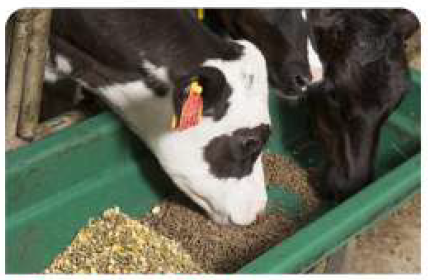
Sustainability
Peanut crop residues consist of leaves, stalks (vines) and remaining pods
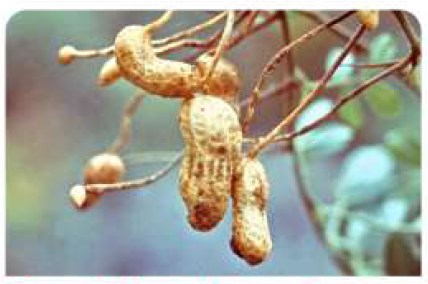
Good Agri Practices
A special mechanism in peanuts allows the flower's fertilised ovary
Market Wizard
The market is increasingly dependent on three peanut origins, i.e. Sudan, Senegal and China.
The other origins. such as Argentina, India, America and Brazil, are bystanders in the mar-ket with their local consumption story or lower crop outcomes. Could these three origins have already become the trendsetter for the global peanut economy?
Africa
The African continent produced 8.4million tons in 2000 and 15milliontons in 2021. The drastic shift in these capacities was contributed by Nigeria (59%), Sudan (1.48%) and Senegal (58%). while Sudan and Senegal had strong export growth of 52 times in the past ten years (mainly due to China and Indonesia), Nigeria's increase in production came from a rise in local consumption. The other origins, such as Tanzania and Mozambique, are seasonal players dependent on markets such as Indonesia. the Philippines and Saudi.
China
China used to be the #1 exporter in the world with 0-36 million tons of exports in the year 1995. In the same year, the Chinese import of peanuts was 14,303 tons. Now, China imports 0.83 million tons of peanuts and 0.3million tons of oil. As a result. exports drifted to 0.086 million tons in 2021, ranking it #9 in the global markets. Between 1995 to now. Chinese production grew by 78%. So what happens to China in the next ten years? Which origin is going to be its major partner? Will China keep steering the global peanut economy to its whims? Do you know the answer? I do not.
Rising demand and fierce competition amongst the origins and G2G agreements have given certain producing regions their advantage. However, this certainly puts other peanut producing and consuming areas. such as Brazil. Argentina. India. America, and Indonesia. at a disadvantage. The origins that do not adapt 10 this phenomenon may lose peanut crops to other competingcrops. Godspeed Peanut.
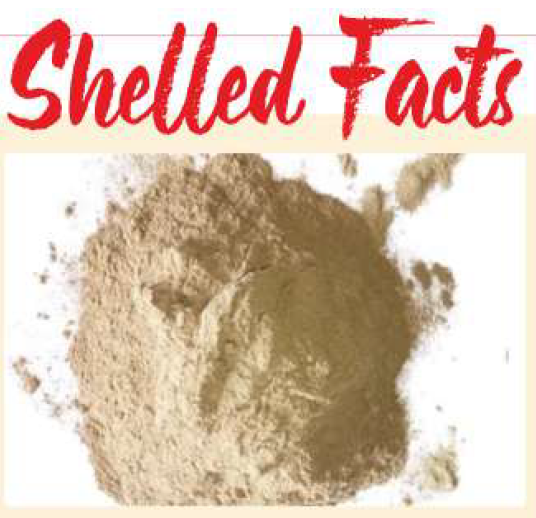
Peanut shell powder can be used for Skin Whitening and Anti Wrinkle Effects.
Peanut shell powder is rich in anlioxiclants and antiinflammatory compounds. making it a popular ingredien L in skincare products because it can soothe and nourish the skin. In addition. due to their antimicrobial nature. Peanuts shells have high lignin content and can act as a broad spectrum sun blocker, an anlioxiclan t and a preservative. Lignin can increase the solar protection factor (SPF) of sunscreens and provide sun protection to body creams. They are also effective for cell regeneration and keep the skin younger.
Global Peanut Market
The winter crop of Gujarat and Rajasthan has conie to an end. It is too early by three months, thanks to China and Vietnam, which imported over 50,000 tons in2 months. The state trading agency maintaining the MSP only covered 35,000 tons of the 22 crop. The summer crop of Gujarat will be sown in February; acreages are expected to expand amid higher realisation by the farm- ers. However, the current stocks cannot match export pricing, and some are reserved for sowing businesses. Despite high kernel prices, oil prices reniained steady strong. The Southern Spanish crops rose in supply (45,000 bags/day) as the harvest progressed. Therefore, the demand from the local consumers is keeping the price ($1475/t) impossible for export shipments or value addition. However, prices are expected to fall because of rising harvests from 4 states (Andra, Telangana, Karnataka and Taniil Nadu) thal produce the majority of the Spanish peanuts in India, with sizes ranging from 40/50 to 140/160. Therefore, we anticipate a bwnper crop supply in a prolonged timeframe.
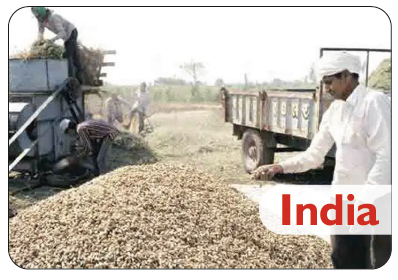
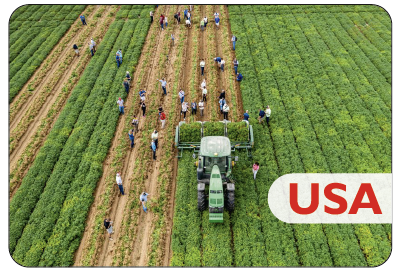
The peanut market is silent. although the holiday season is over. But the good news is that the 2022 harvest has a lot of Jumbos, unlike the previous two harvests. So the export market could open up nicely for the 2022 crop, especially in the EU. The exports were clown to 32,137 MT for November y-o-y, which is a decrease of 6%. On the other hand, export share to countries such as Mexico and Canada showed an increase of 26% &, 17%, respectively. In conlrasl. in peanut exports, the EU, China, the UK and Japan showed a decline of 17%, 62%, 26% and 1.2%, respectively. vVith the 2022 crop, the prospects for a rise in exports are high.
The mood on clemand for the current crop has risen to an unprecedented level amid the following crop updates and climatic uncertainty. In addition, the absence of rain increases the threat to European supplies resulting in hoarding. Shippers in Argentina demand more than $1650 for raw nut shipments to Europe (one of the historical highs). The reduction% of the acreage is still a significanl dispute. Although the crop didn't receive rainfall in the long run, and the ,weather is hot and dry, the rain in the coniing days wiii save the crop. Currenlly, there are fewer 38h2 offers and plenty of 60/70 and 80/100 offers in the market. The price quotes have risen by 50-100$/ton with China in the picture.
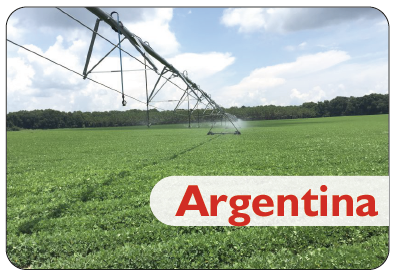

Deni and for the f arnistock is high, and the peanut-crushing capacity is entirely run for the Chinese market. Currently, the shipments of nuts are almost zero, and U1e peanuts are majorly used for crushing, ,which increases the profits on farm- stock. The current crop received welldeserved rain, and the harvest , will do well this tinie. Therefore, the yield of Brazil may increase y-o-y. Oil exports of the 2022 crop increased by around 86% co,npared to the 2021 crop, which is a steep increase. In the same period, the export of nuts is grown only by 12%, which is also a considerable fealconiparing the world tensions in war, and the major consumer of Brazil is Russia.
The futures market in China was bullish before the CNY, with the physical market running slow; after the CNY, both the market turned bullish, with oil prices remaining stagnant but the kernel prices shooting up by 5- 10% amid a steady rise in ,Africa and India. Usually. the trend is the other way around. Larger kernels are tough to find, while smaller kernels in the market are from Sudan. The new crop Sudan is expected to hit the Chinese market by March, and with the excess oil stocks at the crushers, China may be highly volatile in the next few nionths.
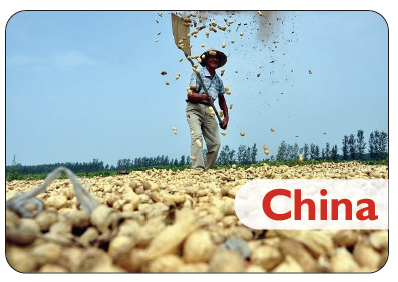
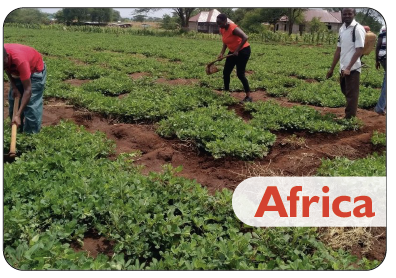
Sudan
Prices are quoted at their mnaxinium by the suppliers . A price range of $1300-1350 FOB for the 708o Spanish types. In addition, the container shortage is causing a significant hurdle for exports. Freight rates have increased by $400-600/20" to Qingdao or Jakarta. Beyond the price rise, the quantuni of exporter defaults in the market is high.
Nigeria
Goods are exported to neighbouring landlocked countries and used for doniestic consumption. The price is around $1300 FOB for export and 0.95$ per kg for the local market
Senegal
Prices are ridicul-ously volatile and have been increased bv local shippers and onsite Chinese buyers. Ex-Warehouse Sonocas are still trying to cover up its volume. The price bought by the Chinese was 475 FCFNkg. The additional concern is that crop damage was more significant due to excess rain. Hence the availability of Type 55 is scarce. Senegal along with Sudan, has become notorious for export contract defaults.
Editor’s Pick
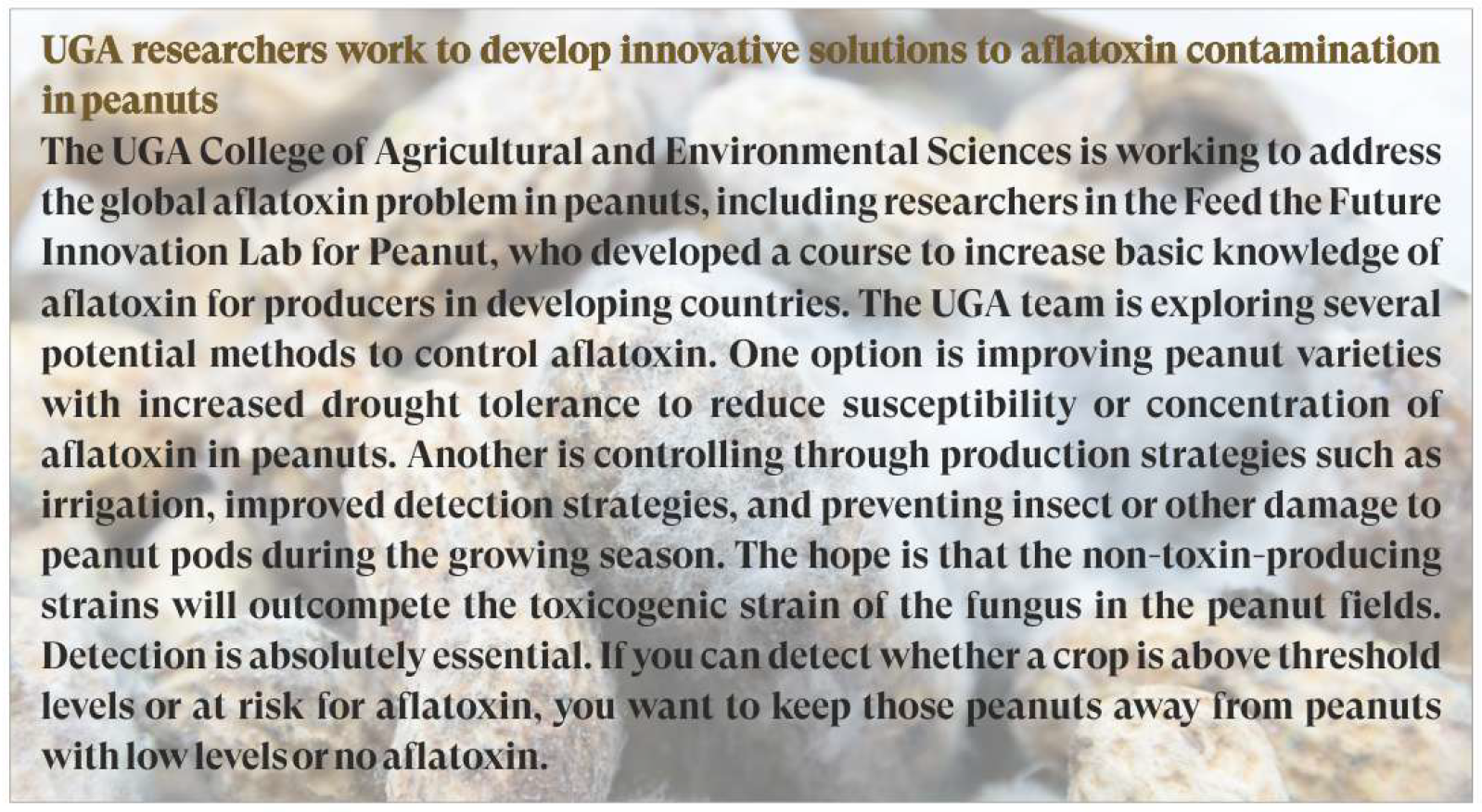

Mr. Martin Masopust
Cofounder, Bohemia nut company and Bohemia Belgium
Say about you
I cofounded Bohemia Nut Company and Bohemia Belgium and have 30 years of experience in the peanut industry.
What could be the future of consuming peanuts?
After crushing (in the maximum volume) peanut butter and snacks. it is difficult to imagine any further development. Despite having a very cheap value in comparison to other nuts. peanuts have greater benefits and high value, particularly peanut snacks and paste.
Cultivar Highlights

Darkest peanut cullivar Zhenzhuhei in China
According to the agriculture research centre, hybridisation can play an important role in obtaining coloured peanuts, which can provide more nutrients. Unlike genetically modified products, traditional peanut cultivars hybridisecl wHhout safety arguments resulted in high-quality peanut products. The compound cyanidin-3-0-sambubioside was one of two anthocyan.ins found among black peanuts. Its content in the seed coat of peanut (Zhenzhuhei) was the highest (20.53 mg/g) among all other cultivars, followed by (Xuzhou) (8.76 mg/g) and peanut (Heiba No.1) (6.70 mg/g), respectively. The amount of
The darkest peanut cultivars is also a potential source of antioxidant ...
cyanidin-3-0-sambubioside in the seed coat of peanut (Zhenzhuhei), were around 60 times and 50 times higher than their whole kernels, respectively. These varieties contained higher amou nts of nutrients (trace mineraJs, amino acids) compared with their traditional. The darkest peanut cultivars is also a potential source of antioxidant for not only health food products, but also cosmetic and medical products. Therefore, although peanut has been found to have an antioxidant effect, consumers may only gain parts of antioxidants from peanuts if the peanut skin is not consumed. Reference; Qjanjun Kuang Et AI., International Journal Of Food Properties 2017, Vol.20,No.S1,S131-s140.
Peanut Innovation
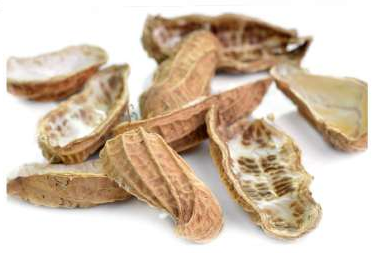
The utilisation of Peanut shell usage in the adsorption of brilliant green dye from an aqueous solution
The brilliant green dye is known as one of the highly toxic dyes, but it is of great importance. It's aimed to investigate the possibility of peanut peels, as absorbent material, to remove brilliant green dye from its aqueous solutions. First, peanut shell samples were prepared and sieved with a 250 pm sieve. Then. an aqueous solution of Brilliant green dye was treated with prepared peanut shell powder to remove the dye. Some factors affecting adsorption, such as contact time, temperature, the concentration of the solution and the amount of adsorbent, were studied Lo determine the removal efficiency. The concentration of the clye was determined bv usino a UV visible spectro-photometer. The results showed that the highest removal percentage was 97.34% when they used 0.250 grams of adsorbent, the contact time was 110 minutes, and 97.05°/4 al 90 minutes. And when the concentration was 20 ppm, the removal was 95.50%, and at 50 ppm, the reduction was 94-76%, and the disposal was 97.18% at a lemperature of 20°C, and it was 97.10% al a temperalure of 60°C.
Current Crops
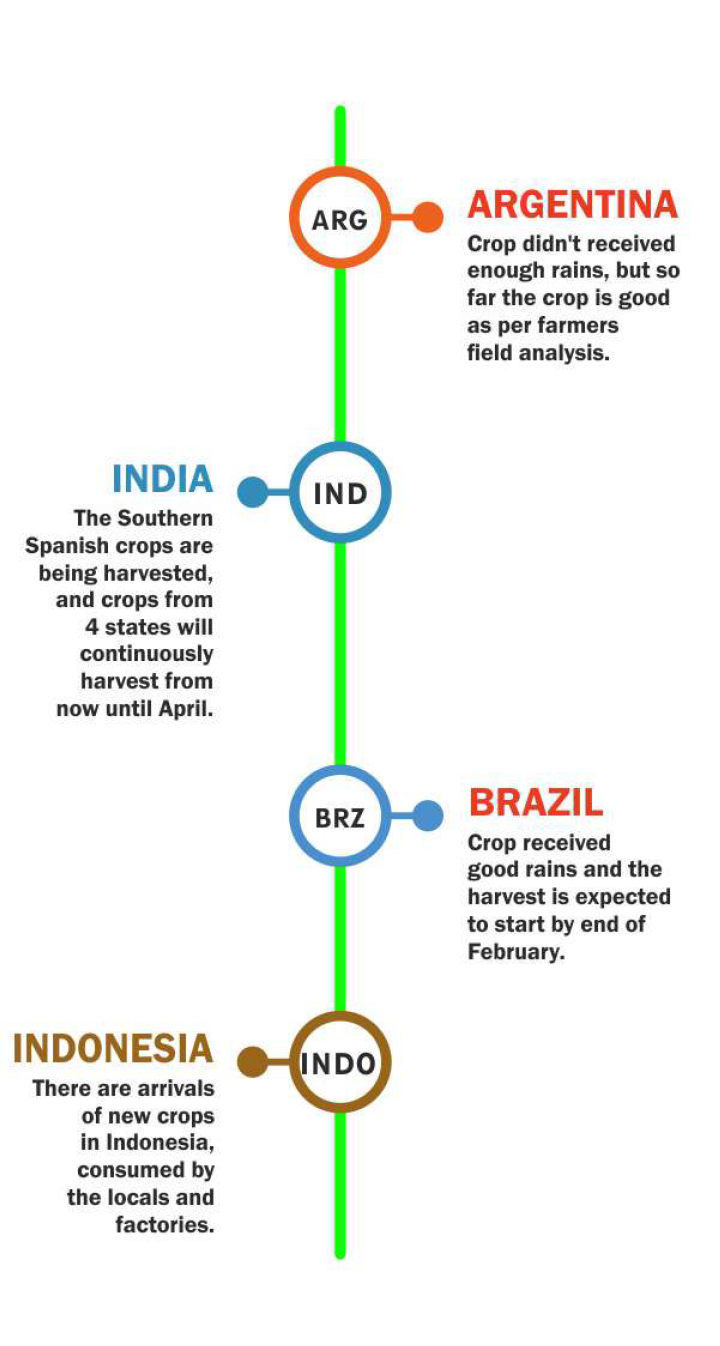
Peanut Sustainability
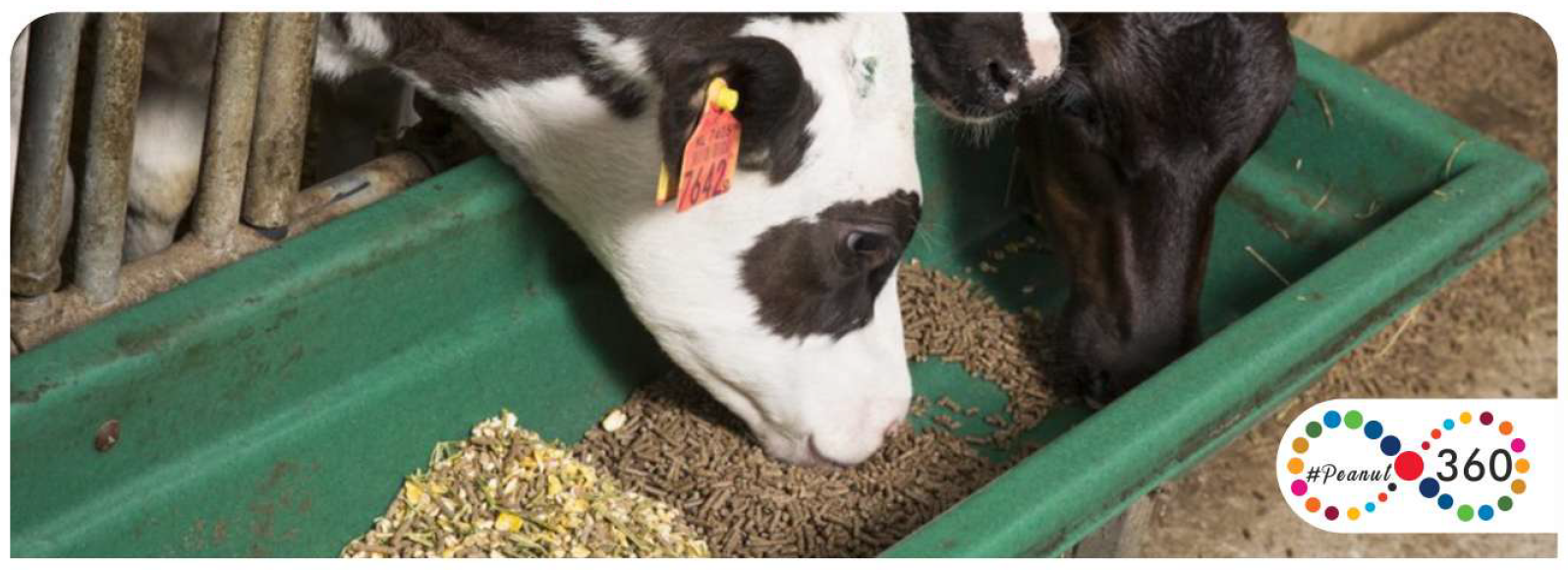
Sustainability in peanut resuides
Peanut crop residues consisl of leaves, stalks (vines) and remaining pods left in the field after the peanut harvest. There is a considerable variation in quality, depending on the harvest method, storage and on the proportions of plant materials included in the residue. Peanut forage is subject to leaf shatter- ing, which increases the proportion of stems and diminishes their nutritional value. Peanut crop residues can be fed fresh, dried or ensiled. Depending on the livestock production system. peanut crop residues can be used as a supplement or as a sole feed. The peanut crop yields large amounts of good quality forage and is an important. and somelimes major, provider of fodder wherever it is grown. Dual purpose peanut varieties capable of producing appreciable quantities of both grain peanuts and good quality hay are being developed and disseminated in Africa and Asia. Peanut by products supply substantial quantities of feedstuffs To beef caltle in the same region where peanuts are produced. Residual peanut hay is by far the most widely used peanut byproduct fed to beef cattle, and if it is properly harvested with minimal leaf shatter, it is comparable to good quality grass hays in nutrient content. Peanut skins are often included in small quantities in cattle and pet foods. supplying both protein and energy. The high tannin content of peanut skins can cause severe performance depression in beef cattle if peanut skins are included at levels higher than 10% of the diet unless diets contain relatively high CP (above 15% CP). or additional N sources are added such as anm1onia or urea. Peanut hulls are effectively used as a roughage source at levels up to 20% of beef finishing diets. for bedding in dairy cattle loafing sheds and in a variety of manufactured products. Peanut hulls are economically priced because of their quantity. their inherent high fibre. and low CP content. and they should not be fed as primary feedstuffs for beef caule. Peanut by products are generally priced below other by products, and they can be incorporated into a variety of supplements and diets for cow herds, growing finishing cattle, and dairy cattle.
peanut crop residues can be used as a supplement ...
Good Agricultural Practices
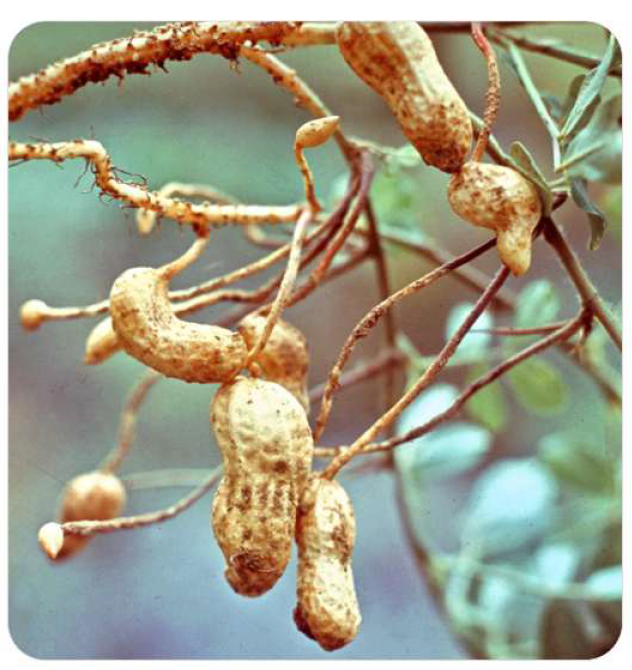
The stages of peanut peg growth.
A special mechanism in peanuts allows the flower's fertilised ovary to be embedded in the soil. forming a peg that eventually turns into a pod. The growth of pegging and pods depends on the soil profile. The ideal soils are sandy loams with good drainage that are covered by deep, friable, readily crumbled loam subsoils. The loa,n soil has good fer tility retention, moclerate air and waLer infiltration, and favourable conditions for peg and plant growth a.s well as pod formation. Subterranean pegs and pods require a slightly acidic soil pH of 6.o to 6.5 for best growth, while a range of 5.5 to 7.0 is acceptable. Successful fertilisation in peanul causes the beginning of peg development. The conversion of the pegs into pods depends on the perception of mechanical stimuli and darkness. Some times the pegs must descend 10 c,n (4 inches) or more before their tips can bear fruit Regardless of the nutrients accessible to the roots, the pods may not develop properly if the soil around them is not adequately supplied with readily available calcium. In the pegging zone, calcium and sulphur are advantageous because their lack in the soil ,night prevent peg and pod development from expanding. The interaction of calcium and nitrogen on peg development but not pod developmenl is shown to have a synergistic effect on bloo,ning, peg, or pod production. The harvested plants are frequently allowed to ,wilt for a day before being stacked around a strong stick that has been buried uprighl in the ground for four to six weeks to cure the pods. In order to shield them f rom the elemenls, the pods are positioned toward the interior of each stack. The entire plant is pulled out of the ground during harvest time, with the exception of the deeper roots.